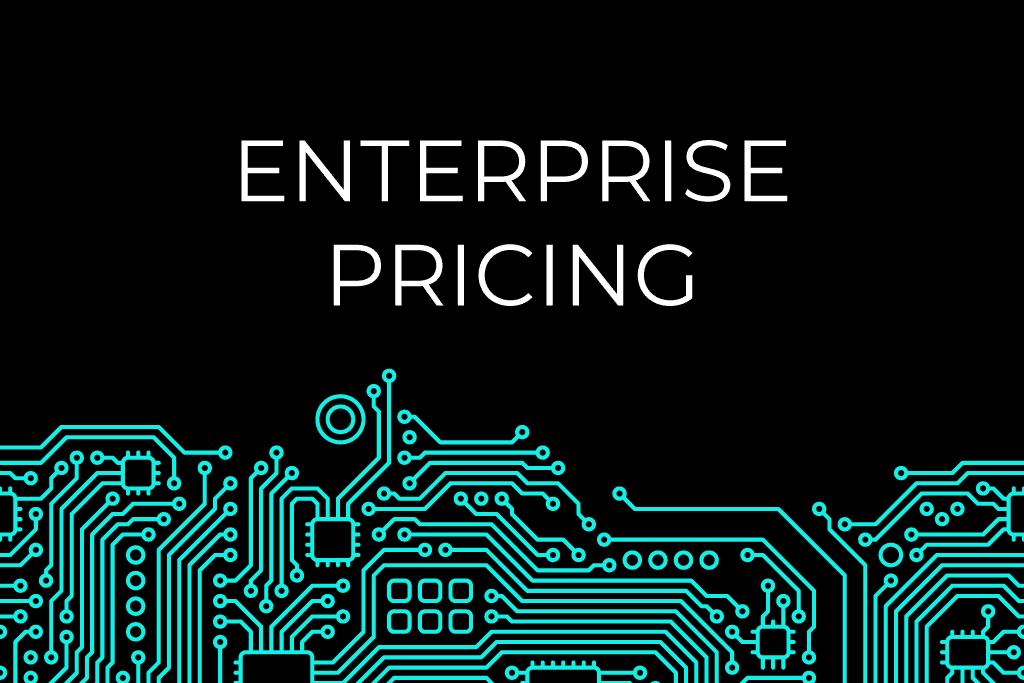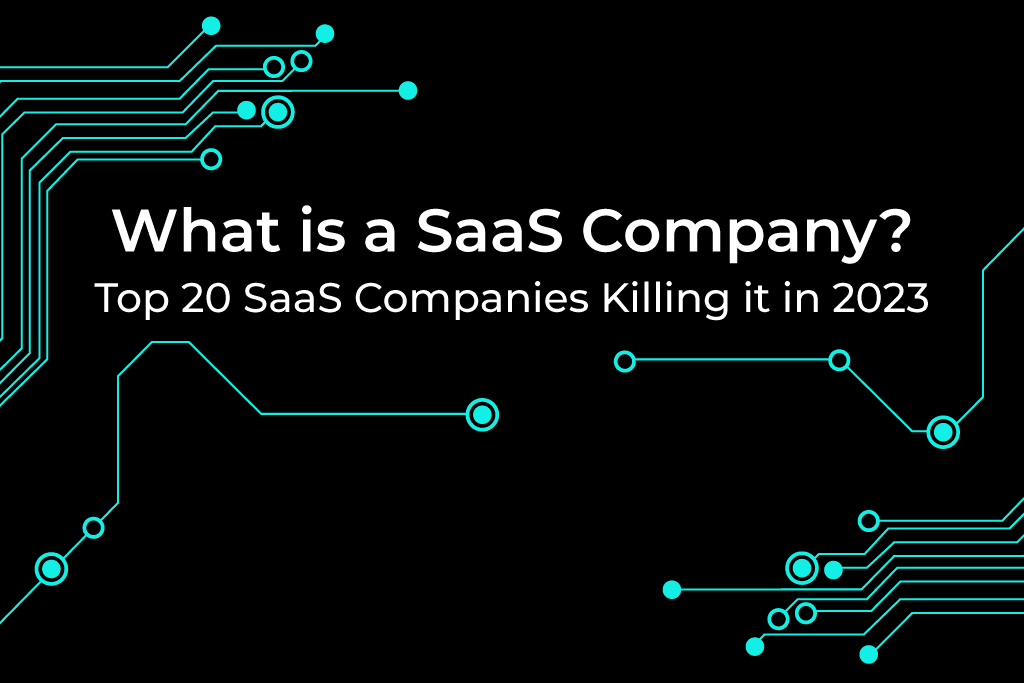The History of SaaS | The New Digital Revolution, Explained
Introduction
Over the last few decades, there has been huge growth in software-as-a-service (SaaS) business models, with SaaS tools helping to power all types of business processes – at even the largest of enterprise-level organizations. Companies have moved away from physical, traditional software and onto the internet to become purely SaaS companies.
In this post, we’ll discuss how SaaS evolved from the ’60s to the present day. We’ll also take a peek into the future and discuss what’s next for SaaS.
Find out how to grow your SaaS company efficiently by booking a free online consultation with accelerate agency today.
Book a Consultation
To help you jump quickly to the sections that interest you most – click on the links below.
- What is SaaS?
- The beginning of SaaS (1960’s)
- Pre-SaaS computing
- Commercialization of computers
- The invention of the World Wide Web
- The rise of Application Service Providers
- The creation of SaaS
- The SaaS revolution
- Where SaaS is headed next
First, let’s look at what’s meant by SaaS – or “software as a service.”
What is SaaS?
SaaS is a software delivery method that allows cloud-based apps to be accessed by users over the internet. SaaS is one of a group of cloud-based models that include platform-as-a-service (PaaS) and infrastructure-as-a-service (IaaS).
Companies don’t have to install expensive hardware or software with SaaS since everything is available over the internet via a web browser. The users’ data is kept in the SaaS vendor’s data center.
Each time a user logs into their online account, they can access the SaaS software on the client-server – from any device – be it a desktop, smartphone or tablet – and at any time – so long as an internet connection is available.
Common SaaS apps include customer relationship management (CRM), human resources, office and messaging, process management, content management, and antivirus software.
While there are many SaaS pricing models, SaaS is generally a subscription-based service where users pay a fixed monthly or annual fee for using the software.
SaaS has become hugely popular, with a recent poll suggesting that around 86% of companies will be running purely on SaaS-based cloud services by 2023.
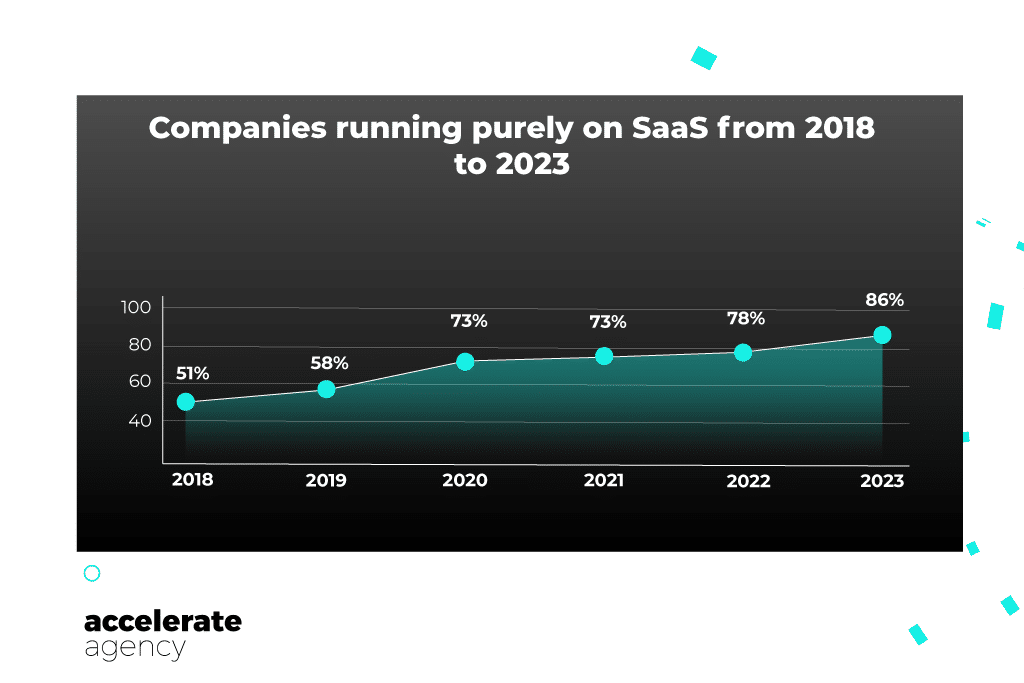
Benefits of SaaS
- Platform independence – SaaS runs a multi-tenant service on the web on any device – so all users can access the service whether it’s on Windows, Mac, iPhone, Android, or Linux
- SaaS software is updated automatically as new features are added, so your IT team no longer has to worry about updates or security patching issues
- Cost-efficiency – all hosting and maintenance costs are included, and it’s easier to predict operating costs over time
- Data security – SaaS providers are generally PCI compliant, with some including even greater security
- User-friendliness – there’s no installation, updates, maintenance, or server configuration requirements
Looking to scale your SaaS business rapidly? Then download accelerate agency’s free ebook here.
The beginning of SaaS (1960’s)
In its early days during the 1960s, computing technology and software development progressed rapidly. However, the cost of running mainframe computers was still too expensive for most organizations. This is why the software as a service industry came into being – with MIT developing the first Compatible Time-Sharing System (CTSS).
CTSS was the first form of SaaS. It involved multiple ‘dumb’ terminals (monitors and keyboards without CPUs) networked to a mainframe computer – a software delivery system known as time-sharing. All applications and data stayed on the mainframe. Users entered input via the terminal keyboard to use the system, and then the output was sent from the mainframe to the appropriate terminal monitor.
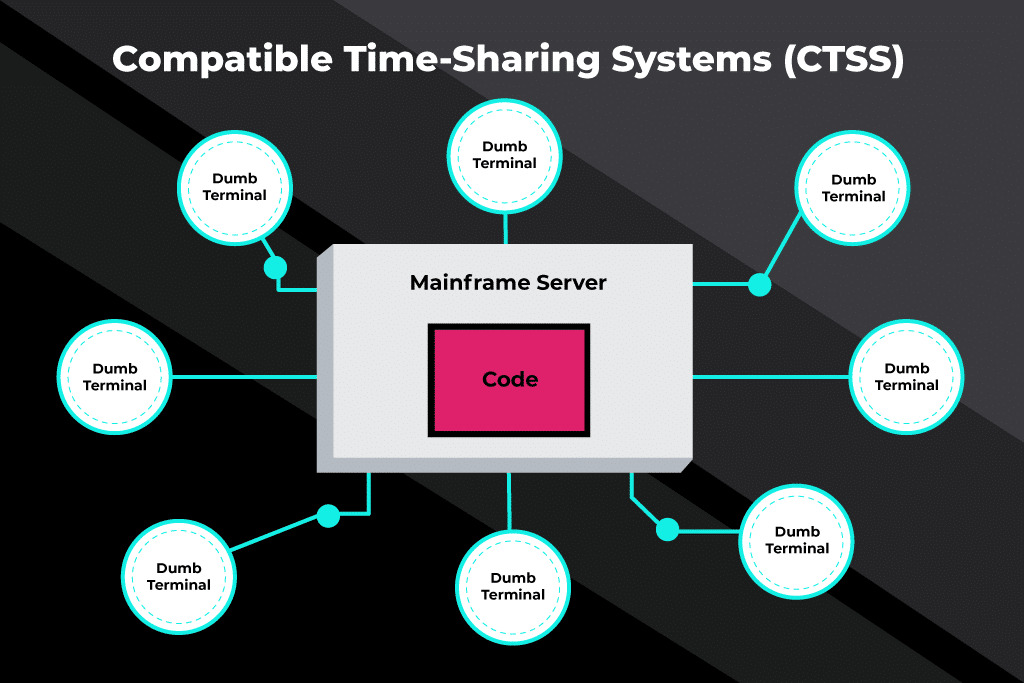
This early way of connecting computers helped businesses access modern computer systems at cost-acceptable enterprise pricing levels.
Accounting and payroll could be delivered via this SaaS-like system which relied on a phone line and modem to send and receive data. Applications were simple, text-based interfaces, and larger files were rarely transmitted.
Pre-SaaS computing
During the 1980s and ’90s, computer hardware technology continued to evolve and became less costly and more portable. Businesses shifted towards individual ownership of computers, with on-premise enterprise software installed on in-house machines as part of personal licenses.
Commercialization of computers
Instead of a large processor shared by many individuals, the development of the microprocessor meant computers became more affordable for businesses. Employees could now have personal computers at their desks.
In 1981, The Xerox Corporation introduced the Xerox Star workstation, the first commercial operating system to incorporate many of the things that are nowadays commonplace in computers – for example, a windows-based graphical user interface, mouse, ethernet networking, file servers, and email.
In 1981, The Xerox Corporation introduced the Xerox Star workstation, the first commercial operating system to incorporate many of the things that are nowadays commonplace in computers – for example, a windows-based graphical user interface, mouse, ethernet networking, file servers, and email.
The introduction of LANs
Given the now lower cost of computers, businesses created their local version of time-sharing. Apps were hosted on local machines, with critical data held on a central server. This was called a Local Area Network (LAN). This can be considered an early form of cloud computing.
Staff were required to back up critical data, maintain hardware, install and update systems organization-wide. Larger companies started to have dedicated IT departments – while staff at smaller companies relied on network managers to provide hardware and software maintenance and train new employees on how to manage systems.
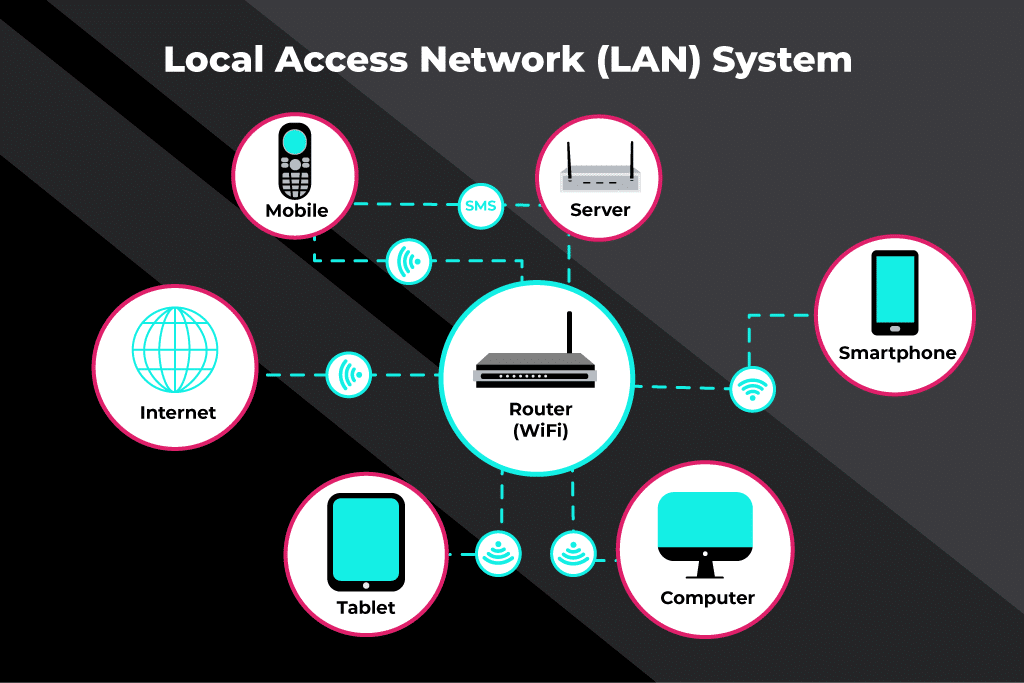
LAN, however, came to be seen as a ‘money sink’ unfortunately, since few companies had staff with the right skills and LAN managers were often overworked and underpaid.
The invention of the World Wide Web
The invention of the World Wide Web was a game-changer. The internet leveraged access to cloud-based solutions to drive digital transformation across all sectors, with core business apps transitioning to SaaS-based solutions.
Daniel Kohn carried out the first secure online credit card transaction in 1994. After this, things began to change rapidly, and everything we think of as ecommerce came into existence.
Netscape Navigator introduced SSL (Secure Sockets Layer) protocol in 1994, which enabled encrypted data transmission over the internet. This meant users could shop online without the risk of losing their data.
In 1995, some SaaS sites appeared, with online marketplace Amazon and AuctionWeb (now known as eBay) launching.
By 2000, Amazon had started to branch out away from its origins as a platform selling books – into other product areas. Third-party sellers were also invited to sell on the marketplace.
The rise of Application Service Providers
Around the time of the dot com fallout, companies realized they no longer needed LAN and began to see the value in storing data offsite with access to it over the internet.
Application Service Providers (ASP) were a forerunner to the SaaS model in that they provided computer-based services over a network. But, whereas SaaS is a self-service offering, the ASP model required the vendor to create every login and environment manually.
The Creation of SaaS
In 1999, Salesforce launched its CRM (customer relationship management) platform. This was the first SaaS system to be built from scratch, and it went on to achieve massive growth.
Unlike other SaaS companies Salesforce was founded to provide SaaS solutions right from the start.
On the other hand, Concur started life selling floppy discs and CD-ROMs of travel and expense software.After the crash of 2001, they evolved to adopt a SaaS model and sold their services for a subscription fee over the internet.

The SaaS revolution
The exponential growth of SaaS and the continuous improvements to its functionality have made it the option of choice for large organizations. It’s cost-effective and user-friendly – and nowadays, there’s a SaaS product for just about any business application you can imagine.
SaaS also revolutionized things for small businesses that couldn’t afford large software suites. With the advent of reliable broadband and decreased costs, scalability became possible and made online business processes faster and more reliable.
Where SaaS is headed next
Most enterprise-level software companies have moved towards SaaS, including Microsoft, Oracle, IBM, and SAP. As the adoption of SaaS increases, the following is predicted to accompany it:
- IT and CIOs will take on new roles – As SaaS applications are marketed more to business users than IT decision-makers, IT teams need to take on more of a commercial role to push purchase decisions in a broader organizational context.
- Automation will become a focus – SaaS makes it easier for companies to utilize AI virtualization technology into the tech stack, for example, chatbots. This makes for a more streamlined, quicker, and more efficient customer experience.
- Open integrations – APIs will continue to play a big role in SaaS products and provide avenues for further integrations with third-party apps. Greater integration means smaller businesses and startups will be on the same playing field as larger companies with the ability to use business intelligence to their advantage in operations.
- More flexibility – SaaS has evolved considerably from its initial model and is now flexible and customizable for businesses. This flexibility allows for further integration with future systems, for example, seamless connectivity between an ecommerce platform and other software tools, e.g., IMS/OMS, PIM, and ERP.
The SaaS industry is set to grow even further over the next few years, with many organizations planning to decrease their use of commercially licensed software. The recent pandemic has accelerated SaaS adoption, with businesses realizing such solutions offer them an opportunity to scale along with fast and reliable remote accessibility.
Worldwide Public Cloud Services End-User Spending Forecast (Millions of U.S. Dollars)
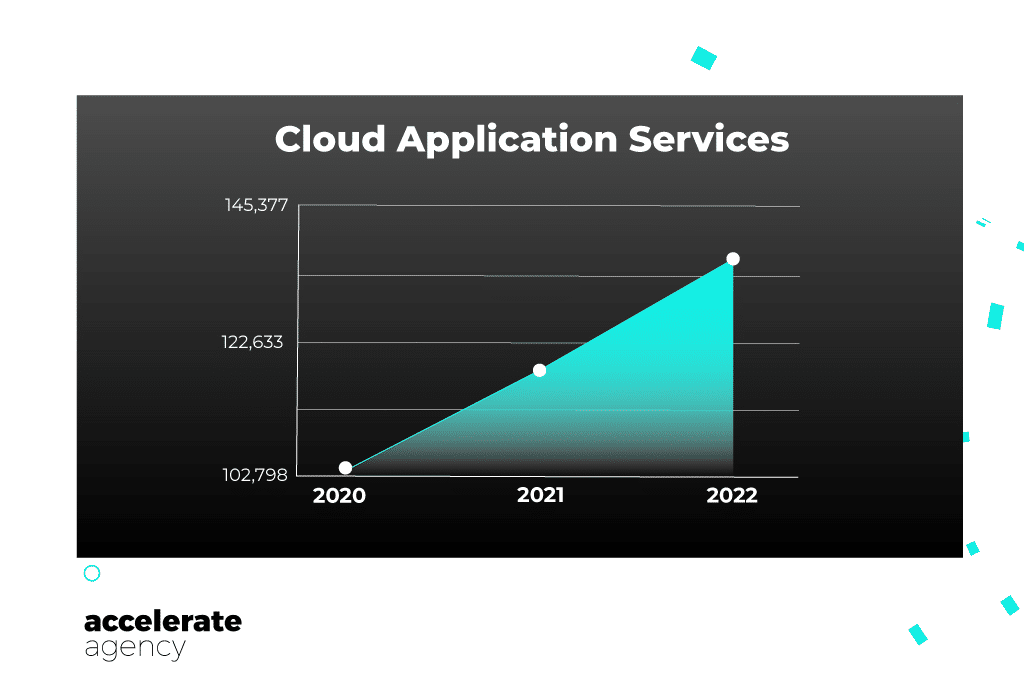
This form of cloud computing looks set to continue revolutionizing how businesses work from enterprise SaaS to SaaS for startups.
